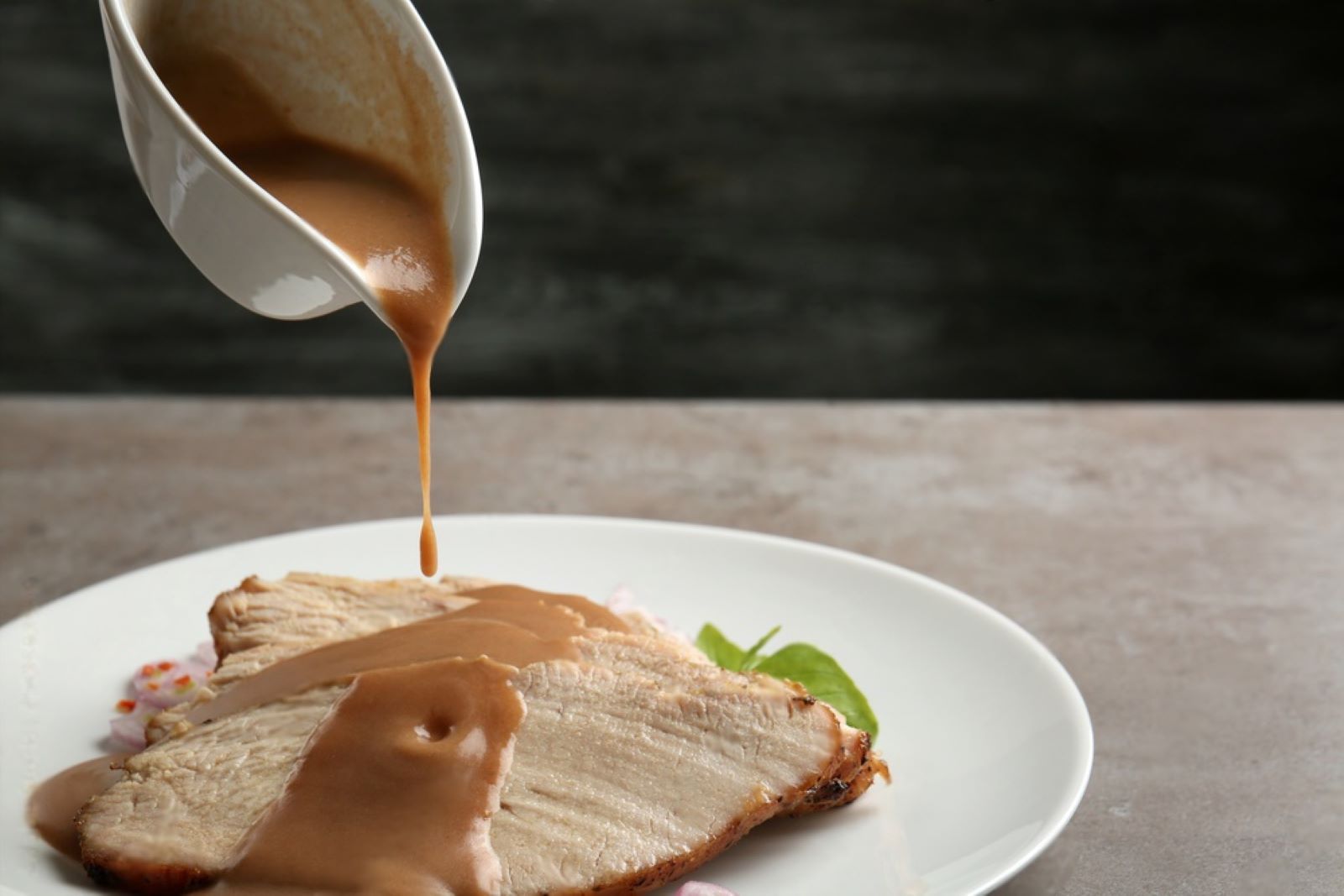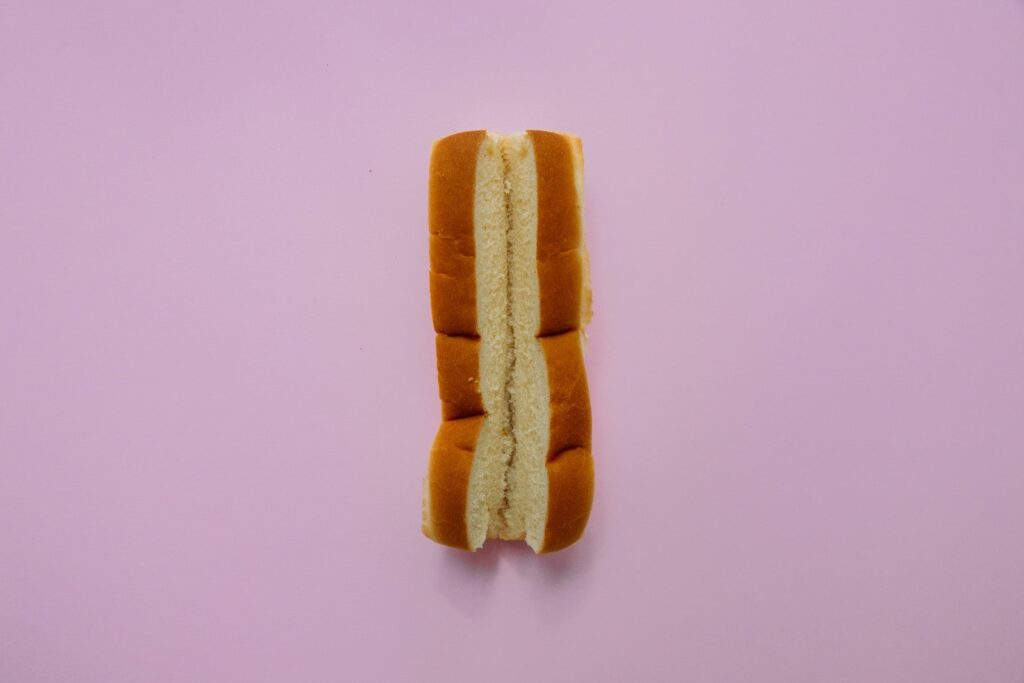
Turkey dressing, a beloved accompaniment to holiday feasts and comforting meals, brings a symphony of flavors and textures to the table. Also known as stuffing, this savory mixture of bread, herbs, vegetables, and seasonings becomes a flavorful partner to roasted turkeys, imparting a sense of tradition and warmth to every bite. Whether prepared inside the turkey cavity or baked separately as a dressing, this dish carries the essence of the season and a touch of culinary nostalgia. However, when making turkey dressing for special occasions or when preparing it in larger quantities, it might be challenging to consume it all before it loses its freshness or flavor.
Freezing turkey dressing emerges as a practical and efficient method to preserve its delightful taste and aromatic charm, ensuring that each spoonful captures the essence of a homemade feast, ready to elevate your meals with the essence of perfectly frozen turkey dressing, even when a freshly prepared batch isn’t readily available or when you crave the comforting flavors of the season at your convenience. In this guide, we will explore the best practices for freezing turkey dressing, enabling you to savor the richness of this festive dish and elevate your culinary creations with the essence of perfectly frozen turkey dressing, without the need for continuous preparations or extensive cooking efforts.
Here are the simple steps to freeze turkey dressing:
Step 1: Prepare the Turkey Dressing
The initial step in successfully freezing turkey dressing involves ensuring that the dressing itself is in its optimal state before preservation. This means that before you proceed with the freezing process, the turkey dressing should be freshly prepared and fully cooked.
Turkey dressing, also referred to as stuffing, is a delightful concoction of ingredients that adds a burst of flavor and texture to holiday meals and special occasions. It is typically made from a combination of bread or breadcrumbs, aromatic vegetables, herbs, spices, and sometimes meat. The mixture is often cooked alongside or inside the turkey during roasting, allowing it to absorb the savory juices and aromas from the turkey as it cooks.
When it comes to freezing turkey dressing, starting with freshly prepared dressing is crucial. The flavors and textures of the ingredients are at their peak immediately after cooking, ensuring that the dressing maintains its quality even after being frozen and thawed.
Whether you’ve opted for a traditional stuffing flavored with sage and onions or a more innovative blend incorporating fruits, nuts, or various herbs, the key is to make sure that the dressing is well-seasoned and properly cooked. This ensures that every bite of the dressing is packed with deliciousness and that the flavors are distributed evenly throughout the mixture.
Preparing the turkey dressing involves cooking the ingredients until they are tender and fully infused with the chosen seasonings. This step ensures that the individual components of the dressing come together harmoniously, creating a cohesive and flavorful mixture that enhances the overall dining experience.
Emphasizes the importance of starting with a freshly prepared and well-cooked turkey dressing before moving on to freezing. This ensures that the flavors are vibrant, the textures are at their best, and the dressing is ready to be preserved while still retaining its delectable qualities.
Step 2: Cool the Dressing
After preparing your turkey dressing and before proceeding with the freezing process, it’s essential to allow the dressing to cool down to room temperature. This seemingly simple step plays a vital role in ensuring the quality and integrity of the dressing during its time in the freezer.
Cooling the dressing serves as a precautionary measure to prevent unwanted condensation from forming inside the packaging. Condensation occurs when warm air comes into contact with a colder surface, causing moisture to accumulate. In the context of freezing food, such as turkey dressing, condensation can have undesirable effects when not managed properly.
When hot or warm dressing is placed directly into packaging and sealed for freezing, the residual heat within the dressing can cause moisture to evaporate. Once the package is sealed, this moisture can then condense on the inner surface of the packaging as the temperature inside the freezer drops. Over time, this condensed moisture can turn into ice crystals, a phenomenon commonly referred to as freezer burn.
Freezer burn negatively impacts the quality of frozen food, including turkey dressing. It can lead to changes in texture and taste, making the dressing less enjoyable to consume. The moisture loss caused by freezer burn can result in a dry and leathery texture, altering the overall mouthfeel of the dressing.
By allowing the turkey dressing to cool down to room temperature before freezing, you minimize the risk of excessive moisture evaporating from the dressing and subsequently forming ice crystals. This helps preserve the dressing’s original texture and flavor, ensuring that it remains as close to its freshly prepared state as possible.
Cooling the turkey dressing before freezing is a crucial step to prevent condensation and the subsequent formation of freezer burn. This step contributes to maintaining the quality, taste, and texture of the dressing throughout its time in the freezer, ultimately ensuring a delightful dining experience when the dressing is thawed and reheated.
Step 3: Portion the Dressing
As you progress in the process of freezing turkey dressing, Step 3 emphasizes the importance of dividing the prepared dressing into manageable portions. This strategic step not only contributes to efficient freezing but also offers practical benefits when it comes to thawing, reheating, and reducing potential food waste.
When preparing turkey dressing, it’s common to make a substantial batch to ensure there’s enough to accompany the main dish, often turkey, during festive meals or gatherings. However, freezing an entire batch as a single unit might not always be practical or convenient, especially if you don’t plan to consume the entire amount in one go.
Portioning the dressing involves dividing the mixture into smaller, individual-sized portions before freezing. This division allows you to freeze only the amount you intend to use for a particular occasion, rather than having to thaw the entire batch each time you want to enjoy some dressing. This approach helps minimize unnecessary thawing and reheating, which can lead to potential food waste if you’re unable to consume the entire batch before it starts to lose its optimal quality.
By freezing the dressing in manageable portions, you can easily customize your portions based on the number of people you’re serving or your personal preferences. This can be particularly useful during smaller meals or when you’re cooking for one or two people.
Additionally, portioning helps speed up the thawing and reheating process. Smaller portions thaw more quickly and evenly than a large, solid block of dressing. This means you can have a portion of your delicious turkey dressing ready to be enjoyed in less time.
Reducing waste is another advantage of portioning. If you’re freezing the dressing as a whole, you might end up thawing more than you actually need, leading to potential leftovers that might not retain their best quality upon reheating. Portioning minimizes this risk, allowing you to thaw and reheat only what you intend to consume, reducing the likelihood of leftovers going to waste.
Portioning the turkey dressing before freezing. This practice offers practical benefits in terms of efficient thawing, reheating, and waste reduction. By dividing the dressing into manageable portions, you can enjoy the convenience of having just the right amount of delicious dressing whenever you need it, while also minimizing the potential for food waste.
Step 4: Package for Freezing
In the freezing process for turkey dressing, Step 4 focuses on the crucial task of packaging the prepared dressing for storage in the freezer. Proper packaging is essential to safeguard the dressing’s flavor, texture, and overall quality during its time in the freezer.
When it comes to packaging, you have several options to choose from, each serving the purpose of creating a barrier between the dressing and the cold air of the freezer. The goal is to minimize exposure to air and moisture, as these factors can lead to freezer burn and the degradation of the dressing’s taste and texture.
- Plastic Wrap
Wrapping each portion of turkey dressing tightly in plastic wrap is a straightforward and effective method. This creates a protective layer that helps prevent air and moisture from reaching the dressing. Make sure the plastic wrap is securely sealed around the dressing to minimize the risk of freezer burn.
- Airtight Freezer-Safe Containers
Using airtight containers designed for freezer storage is another excellent choice. These containers are specifically designed to create a seal that keeps out air and moisture, preserving the dressing’s quality. Place each portion of dressing in its own container and ensure the lid is tightly sealed.
- Heavy-Duty Resealable Plastic Bags
Heavy-duty resealable plastic bags are convenient for freezing. Place a portion of turkey dressing in a bag, squeeze out as much air as possible before sealing, and then press the seal to ensure it’s airtight. The key is to minimize the air inside the bag to prevent freezer burn.
Removing as much air as possible from the packaging is a critical step to prevent freezer burn. Freezer burn occurs when moisture within the food evaporates and then recondenses on the surface as ice crystals. This process can lead to a loss of flavor, changes in texture, and overall deterioration of the dressing’s quality.
Whether you choose plastic wrap, airtight containers, or heavy-duty bags, the goal is to create a barrier that maintains the dressing’s integrity. When packaging, ensure that there are no gaps or openings that might allow air or moisture to enter.
Emphasizes the importance of proper packaging for freezing turkey dressing. Whether using plastic wrap, airtight containers, or heavy-duty bags, the key is to minimize exposure to air and moisture to prevent freezer burn and maintain the dressing’s flavor and texture. This step is essential for preserving the dressing’s quality until it’s ready to be thawed, reheated, and enjoyed.
Step 5: Label and Date
As you progress in the process of freezing turkey dressing, Step 5 highlights the importance of labeling and dating each package before storing it in the freezer. This seemingly simple task carries significant benefits in terms of organization, prioritization, and maintaining the quality of your frozen food.
- Labeling the Package:
When you label each package of frozen turkey dressing, you’re creating a clear and informative identifier for what’s inside. This step is especially valuable if you have multiple types of frozen dishes or ingredients in your freezer. By labeling the package, you avoid confusion and make it easy to distinguish the turkey dressing from other items.
- Dating the Package:
Dating the package with the date of freezing is equally essential. This practice provides a reference point for how long the dressing has been in the freezer. Over time, frozen foods can begin to degrade in quality, and while the dressing may still be safe to consume, it might not deliver the same taste and texture as when it was freshly frozen. By dating the package, you can track how long the dressing has been frozen and make informed decisions about when to use it.
- Prioritization and Rotation:
Labeling and dating your frozen turkey dressing enables you to prioritize the usage of your frozen items. You can arrange your freezer in a way that places newer items behind older ones. This encourages a rotation system where you use the older items first, ensuring that nothing sits in the freezer for an extended period, potentially losing its best quality.
- Minimizing Food Waste:
Keeping track of the freezing date helps you manage your frozen inventory effectively. It reduces the risk of forgetting about items in the freezer, only to find them months later when their quality might have significantly declined. By using your frozen turkey dressing within a reasonable time frame, you contribute to minimizing food waste.
- Efficiency and Planning:
When you can quickly see what’s in each package and how long it has been frozen, you can plan meals more efficiently. You’ll know when to thaw the dressing and incorporate it into your meals, ensuring that you’re making the most of your frozen resources.
Emphasizes the significance of labeling each package of frozen turkey dressing with its contents and the date of freezing. This practice aids in organization, prioritization, minimizing food waste, and making informed decisions about when to use the frozen dressing. By implementing this step, you ensure that your frozen turkey dressing remains a valuable and delicious component of your culinary endeavors.
Step 6: Freeze the Dressing
In the process of freezing turkey dressing, Step 6 underscores the significance of properly placing the wrapped or packaged portions of dressing in the freezer. This step involves strategic placement to promote effective and even freezing, while also ensuring convenient access to the frozen portions when needed.
- Efficient Freezing:
When placing the wrapped or packaged turkey dressing portions in the freezer, it’s important to arrange them in a way that promotes efficient and consistent freezing. Proper spacing between packages allows cold air to circulate freely around each portion, facilitating uniform freezing. Adequate airflow prevents the formation of ice crystals and frost, which can degrade the quality of the dressing over time.
- Preventing Clumping:
Avoid placing the portions too close together, as this can lead to portions freezing together into a solid block. This not only makes it challenging to separate individual portions later on but also slows down the thawing process. Adequate spacing ensures that each portion freezes independently and maintains its distinct shape and texture.
- Easy Access and Organization:
Consider accessibility when arranging the frozen portions. Place the dressing in a way that allows you to easily reach and retrieve the desired portion without having to rearrange the entire freezer. You might choose to stack the packages or use storage bins to keep similar items together. Labeling and dating each package (as discussed in Step 5) can further enhance your organization, allowing you to quickly identify the dressing you want to use.
- Stacking and Layering:
If you have limited freezer space, stacking the portions can be a viable option. However, ensure that the portions are stable and won’t topple over. If you need to stack packages, consider placing a layer of cardboard or freezer-safe dividers between them to prevent sticking and facilitate separation.
- Temperature Control:
Keep in mind that placing warm or hot portions of turkey dressing directly in the freezer can raise the temperature of the surrounding frozen items. This can compromise the quality of other frozen foods in your freezer. To maintain the overall integrity of your frozen items, ensure that the turkey dressing portions have cooled down to room temperature before placing them in the freezer.
Highlights the importance of carefully placing the wrapped or packaged turkey dressing portions in the freezer. By arranging them for efficient freezing, preventing clumping, ensuring easy access, and maintaining temperature control, you contribute to preserving the dressing’s quality and accessibility for future use. Proper placement supports an organized freezer and enhances your overall frozen food management system.
How long can turkey dressing last in the freezer?
Turkey dressing can last in the freezer for about 1 to 3 months while maintaining optimal quality. After this period, it may still be safe to consume, but there could be a decline in taste and texture due to freezer burn. Proper packaging, labeling, and storage temperatures can extend its freezer life.
Step 7: Thaw and Reheat
In the process of enjoying your frozen turkey dressing, Step 7 emphasizes the crucial steps of thawing and reheating to ensure that the dressing regains its original taste, texture, and overall quality. Thawing and reheating should be carried out carefully to preserve the flavors and ensure that the dressing is safe to eat.
Thawing:
Thawing is the process of gently bringing the frozen turkey dressing back to a safe and consumable temperature. To thaw the dressing, transfer the desired portion from the freezer to the refrigerator. Thawing in the refrigerator is a gradual and safe method that prevents the growth of harmful bacteria and maintains the dressing’s texture. Planning ahead is important, as the thawing process requires time. Overnight thawing is often recommended to ensure that the dressing is fully defrosted and ready for reheating.
- Avoid Rapid Thawing:
Avoid using rapid thawing methods, such as leaving the dressing at room temperature or using hot water. Rapid thawing can cause uneven temperature distribution and increase the risk of bacterial growth. Uneven thawing may result in portions of the dressing being partially cooked while others remain frozen, compromising the overall quality and safety of the dish.
Reheating:
Once the turkey dressing is fully thawed, you can proceed to reheating. Reheating helps bring the dressing to a safe serving temperature, ensuring that it’s hot throughout. You have two common options for reheating:
- Oven: Preheat your oven to a moderate temperature (around 350°F or 175°C). Place the portion of turkey dressing in an oven-safe dish and cover it to prevent drying out. Reheat for a suitable amount of time, usually around 15-20 minutes, or until the dressing is heated through. Stirring occasionally during reheating can help distribute the heat evenly.
- Microwave: If you’re looking for a quicker option, you can use a microwave. Place the dressing in a microwave-safe container and cover it loosely to prevent splattering. Reheat in short intervals, stirring in between, to ensure even heating. This method is efficient, but be cautious not to overheat, as microwaving for too long can result in uneven temperatures and affect the texture.
Safety and Quality:
During reheating, ensure that the turkey dressing reaches an internal temperature of at least 165°F (74°C) to ensure it’s safe to eat. Using a food thermometer can help you monitor the temperature accurately. Reheating to the proper temperature also helps revive the flavors and textures that might have been affected by freezing.
Emphasizes the proper thawing and reheating techniques to ensure that your frozen turkey dressing is safe, delicious, and satisfying to consume. Thawing in the refrigerator and reheating in the oven or microwave are safe methods that preserve the quality of the dressing while ensuring it reaches the appropriate temperature for consumption.
Other related questions
Can you refreeze turkey dressing?
Refreezing turkey dressing is not recommended. Once thawed, bacteria can multiply, compromising safety and quality. To maintain taste and texture, consume thawed dressing promptly.
How do I know if the turkey dressing has gone bad after being frozen?
Signs of frozen turkey dressing going bad include off odors, unusual texture (e.g., mushy or grainy), freezer burn (dry, discolored patches), or loss of flavor. Excessive ice crystals can indicate moisture loss. If in doubt, trust your senses and discard if quality seems compromised.
Can I freeze stuffing with added fruits, nuts, or meats?
Yes, you can freeze stuffing with added fruits, nuts, or meats. However, consider that textures may change upon thawing; nuts could lose crunchiness, and fruits might become softer. Balancing ingredients and slightly undercooking before freezing helps maintain desired textures.
Can I freeze stuffing with fresh herbs or should I add them later?
You can freeze stuffing with fresh herbs, but adding them later may preserve their flavor better. Freezing can diminish the vibrant taste of herbs. Incorporating herbs post-thawing maintains their aromatic qualities for a more pronounced taste in the dish.
Can I add extra moisture before freezing turkey dressing?
Adding extra moisture before freezing turkey dressing can help prevent it from drying out during storage. However, be cautious not to overdo it, as excessive moisture might lead to a mushy texture upon thawing. Balancing moisture ensures the dressing retains its desired consistency when reheated.
What’s the impact of seasonings on the quality of frozen stuffing?
Seasonings impact the quality of frozen stuffing. Strong seasonings can intensify during freezing, so use them moderately. Mild seasonings might fade, requiring adjustment before serving. Balancing seasoning levels ensures optimal flavor in thawed stuffing.








